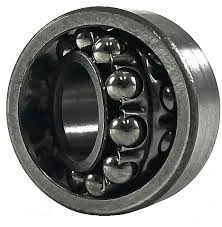
Sep . 28, 2024 07:06 Back to list
Understanding the Basics of Angular Contact Ball Bearings and Their Applications
Understanding Angle Contact Ball Bearings A Comprehensive Overview
Angle contact ball bearings are specialized devices designed to support both radial and axial loads, making them essential components in various machinery and applications. Their unique design allows them to handle higher speeds and accommodate higher axial loads compared to standard radial ball bearings. This article delves into the structure, functionalities, applications, and advantages of angle contact ball bearings.
Structure and Design
Angle contact ball bearings consist of an inner and outer ring, cage, and rolling elements (balls). The key feature that distinguishes them from other types of bearings is the angle at which the balls contact the raceways. This contact angle commonly ranges between 15 and 40 degrees. A larger contact angle allows the bearing to handle higher axial loads; conversely, a smaller angle is more suited for applications requiring high-speed operations while managing lower axial loads.
The configuration of the bearing also plays a vital role in its performance. Angle contact ball bearings can be arranged in pairs, face-to-face (back-to-back), or even in a single setup to accommodate varying load directions. This flexibility further enhances their capability to manage complex load scenarios effectively.
Functionalities
The primary functionality of angle contact ball bearings revolves around their ability to support combined loads. In many applications, bearings must withstand radial loads (perpendicular to the shaft) and axial loads (parallel to the shaft). Angle contact ball bearings can efficiently accommodate both simultaneously, making them versatile for applications requiring multidirectional load support.
When installed, these bearings exhibit a unique behavior where the balls make contact with the raceways at an inclined angle. This angle allows for improved load distribution across the bearing surfaces, thus reducing wear and extending the life of the components involved. Additionally, the design contributes to lower friction losses, enabling higher operational speeds, which is critical in many industrial and commercial applications.
Applications
Angle contact ball bearings are found in various applications across multiple industries. Some notable examples include
1. Machine Tool Spindles In high-speed spindles, angle contact bearings ensure precise positioning and stability, which is crucial for machining accuracy.
angle contact ball bearing

2. Automotive These bearings are commonly used in gearboxes, differential assemblies, and wheel hubs, where they manage the radial and axial loads encountered during vehicle operation.
4. Robotics and Automation In robotic arms and automated machinery, these bearings facilitate smooth movement and precise control, essential for modern manufacturing processes.
Advantages
The advantages of angle contact ball bearings make them an attractive choice for engineers and designers. Some of the significant benefits include
- Load Handling Capacity They excel at managing combined loads, allowing for compact designs in applications where space is limited.
- High Speed Performance With low friction and heat generation, angle contact ball bearings can operate efficiently at high speeds, which is particularly beneficial in high-speed machinery.
- Durability Enhanced load distribution leads to reduced wear, increasing the lifespan of both the bearing and the machinery in which it is installed.
- Versatility Due to their design, angle contact ball bearings can be customized for specific applications, allowing engineers the flexibility to meet precise performance requirements.
Conclusion
In summary, angle contact ball bearings are indispensable components in numerous modern engineering applications. Their adaptability to handle combined radial and axial loads, along with their ability to operate at high speeds and under rigorous conditions, underscores their importance in industries ranging from automotive to aerospace. As technology advances, the design and application of angle contact ball bearings will continue to evolve, further enhancing their critical role in machinery and equipment around the world.
Latest news
-
Grooved Ball Bearing Design and Functionality
NewsJun.04,2025
-
Concrete Mixer Bearing Load Capacity Testing
NewsJun.04,2025
-
6004 Bearing Dimensions in Robotic Joint Designs
NewsJun.04,2025
-
Advantages of Single-Row Deep Groove Ball Bearings
NewsJun.04,2025
-
Applications of Deep Groove Ball Bearings in Automotive Systems
NewsJun.04,2025
-
Innovations in Bearing Pressing Machine Design
NewsJun.04,2025
